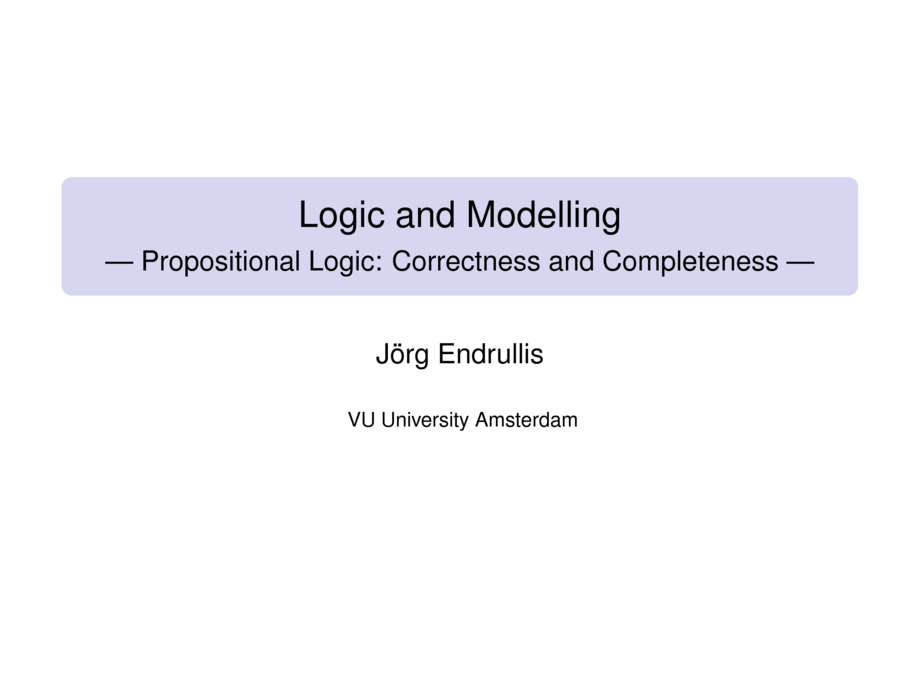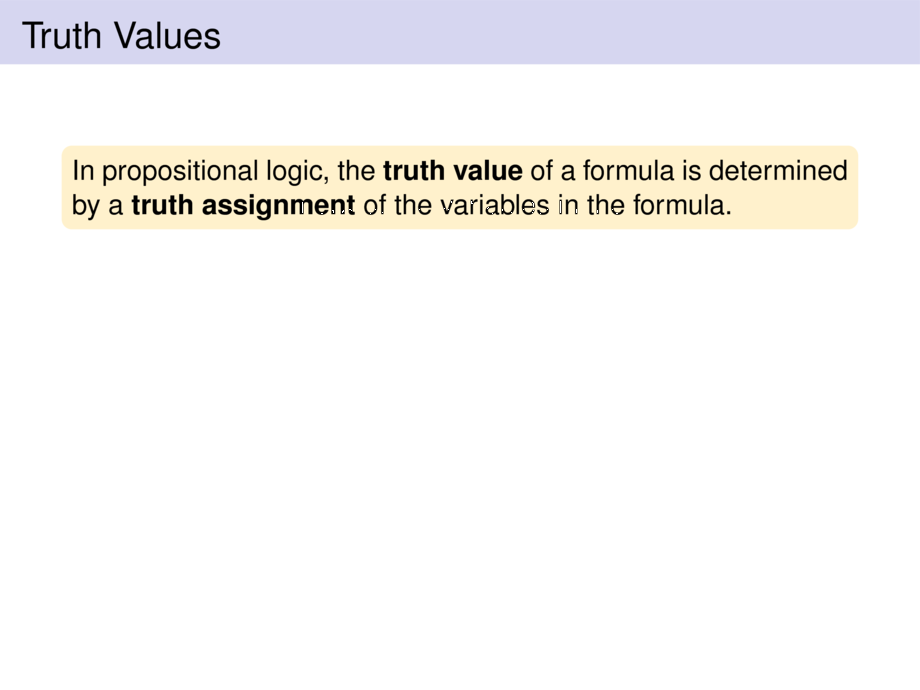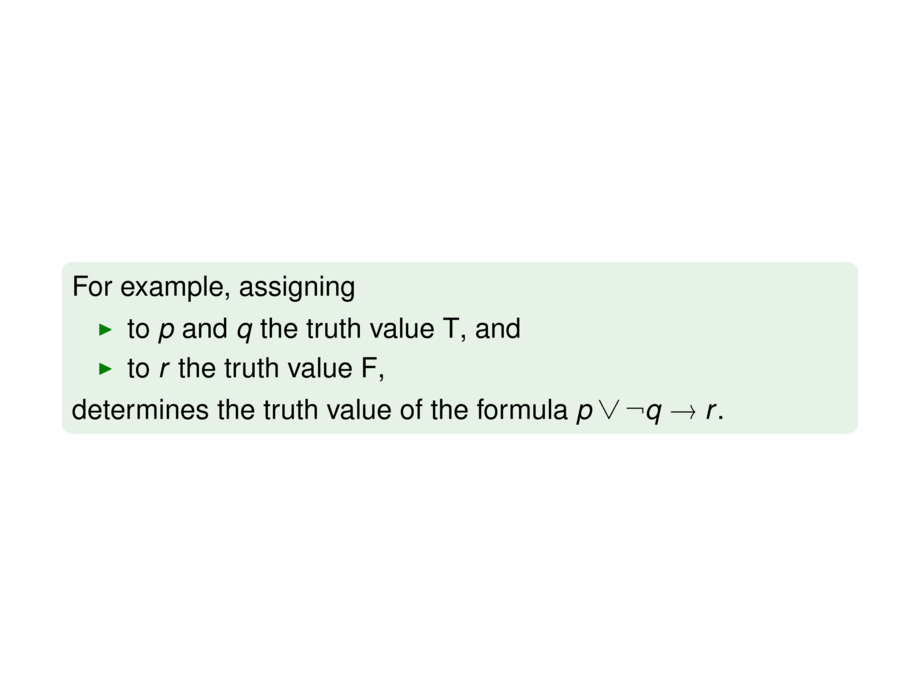



































































































3/32
\begin{frame}
\frametitle{Truth Values}
\begin{goal}{}
In propositional logic,
the \emph{truth value} of a formula is
determined by a \emph{truth assignment} of the variables in the formula.
\end{goal}
\pause\smallskip
\begin{exampleblock}{}
For example, assigning
\begin{itemize}
\item to $p$ and $q$ the truth value $\T$, and
\item to $r$ the truth value $\F$,
\end{itemize}
determines the truth value of the formula $p \vee \neg q \to r$.
\end{exampleblock}
\pause\bigskip
The truth value of a formula can, for example,
be computed via:
\begin{itemize}
\item the \emph{parse tree}, or
\item by making a \emph{truth table}.
\end{itemize}
\end{frame}

